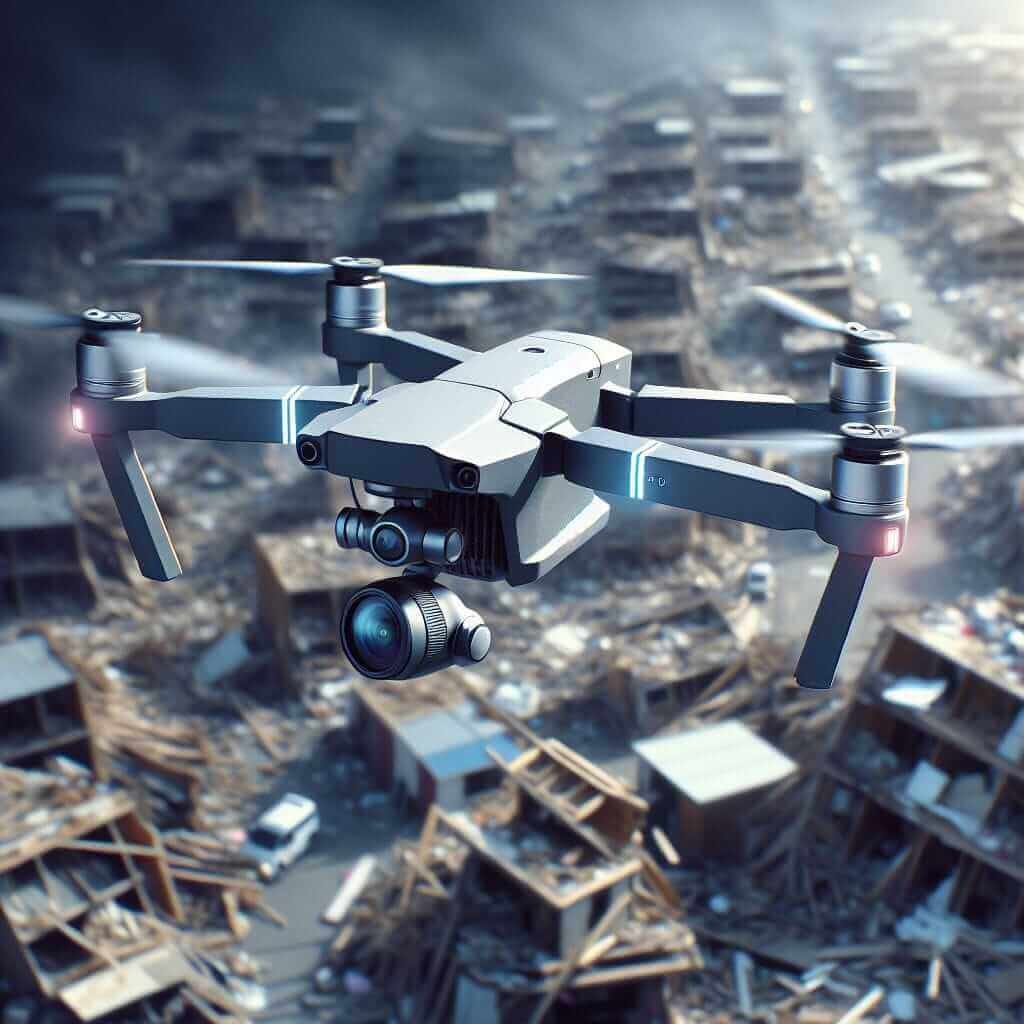In the IELTS Reading Test, candidates often encounter diverse topics ranging from science, technology to social issues. One pertinent and ever-relevant topic is disaster preparedness and response, particularly in how technology is enhancing these efforts. This subject not only encompasses various technological advancements but also reflects current global concerns, making it a frequent topic in IELTS exams. Understanding this topic can aid candidates in both the Reading and Writing sections of the IELTS exam.
Reading Passage: How is Technology Enhancing Disaster Preparedness and Response?
The Rising Role of Technology in Disaster Management
Natural and man-made disasters pose significant challenges to societies worldwide. With advances in technology, various innovative solutions have emerged to better prepare for and respond to these calamities. Let’s explore how technology is transforming disaster management.
Emerging Technologies for Prediction and Early Warning
Modern technology has greatly enhanced our ability to predict disasters and issue timely warnings. Satellite remote sensing, for instance, provides real-time data on weather patterns, enabling meteorologists to predict storms, hurricanes, and floods more accurately. In addition, state-of-the-art seismic sensors and GPS technology can detect the early signs of earthquakes and tsunamis, allowing communities to evacuate before disaster strikes.
Real-time Communication Networks
Another critical component of disaster preparedness is efficient communication. Advances in wireless technology and the proliferation of smartphones have enabled authorities to send real-time alerts to the public. Social media platforms also play a crucial role, providing a channel for instant information dissemination.
Drones and Robotics
Unmanned aerial vehicles (drones) and robotics have found indispensable roles in disaster response. Drones can quickly survey affected areas, providing high-definition images and videos, which help in assessing the extent of damage and deploying resources effectively. Similarly, robots equipped with sensors and cameras can navigate through debris in search and rescue operations, ultimately saving lives.

Geospatial Information Systems (GIS)
GIS technology integrates data from various sources to create comprehensive maps that assist in visualizing and analyzing disaster scenarios. These systems help responders and planners make informed decisions on emergency evacuation routes, resource allocation, and rebuilding efforts.
Artificial Intelligence and Machine Learning
AI and machine learning algorithms analyze vast amounts of data to detect patterns and predict potential disasters. By identifying risk factors, AI can forecast where disasters are likely to occur, enabling proactive measures. For instance, AI-driven models can predict the spread of wildfires or the impact of climate change on sea levels.
Challenges and Future Directions
While technology has significantly improved disaster preparedness and response, challenges remain. There is a need for greater investment in resilient infrastructure, training for first responders, and international cooperation to share technological advancements. As we continue to innovate, the goal is to build a future where technology minimizes the impact of disasters and enhances our ability to recover swiftly.
IELTS Reading Questions
Question Types
The following questions are devised to test comprehension and analytical skills based on the provided reading passage. The set includes a mix of question types commonly found in IELTS Reading tests.
Multiple Choice
-
Which technology is used for real-time data on weather patterns?
a) Drones
b) GPS
c) Satellite remote sensing
d) AI and machine learning -
What role do social media platforms play in disaster preparedness?
a) Predicting disasters
b) Real-time alerts
c) Navigating through debris
d) Providing maps for analysis
Identifying Information (True/False/Not Given)
-
Drones can be used to deliver real-time weather updates.
- True
- False
- Not Given
-
Social media exclusively serves the purpose of sending alerts during disasters.
- True
- False
- Not Given
Matching Information
-
Match the following technologies with their respective functions:
- Satellite remote sensing
- GIS technology
- AI and machine learning
- Drones
Functions:
a) Creating comprehensive maps
b) Predicting the spread of wildfires
c) Providing real-time data on weather patterns
d) Assessing extent of damage through high-definition images
Short-answer Questions
- What technological advancement helps communities evacuate before an earthquake?
- Name one challenge still faced in improving disaster preparedness and response.
Answer Key
Multiple Choice
- c) Satellite remote sensing
- b) Real-time alerts
Identifying Information
- False
- False
Matching Information
-
- Satellite remote sensing – c) Providing real-time data on weather patterns
- GIS technology – a) Creating comprehensive maps
- AI and machine learning – b) Predicting the spread of wildfires
- Drones – d) Assessing extent of damage through high-definition images
Short-answer Questions
- Seismic sensors and GPS technology.
- Greater investment in resilient infrastructure.
Common Errors
- Misinterpreting the role of certain technologies: It’s essential to understand specific technologies’ roles and applications carefully.
- Confusing True/False/Not Given with Yes/No/Not Given: Always refer back to the passage to confirm accuracy.
Vocabulary
- Resilient (adj) /rɪˈzɪliənt/: capable of withstanding or recovering quickly from difficulties.
- Proliferation (n) /prəˌlɪfəˈreɪʃən/: rapid increase in numbers.
- Real-time (adj) /ˈriːəl taɪm/: occurring or operating at the same time as events transpire.
Grammar Focus
- Using Present Perfect Tense: “Technology has greatly enhanced our ability to predict disasters.”
- Relative Clauses: “Drones, which provide high-definition images, help in assessing the extent of damage.”
Conclusion
To excel in the IELTS Reading test, practice with diverse topics and improve comprehension and analytical skills. Utilize this reading passage and answer the questions to get a grasp of real-world topics like disaster preparedness enhanced by technology. Remember to focus on tricky grammar points and enrich your vocabulary with each practice session.